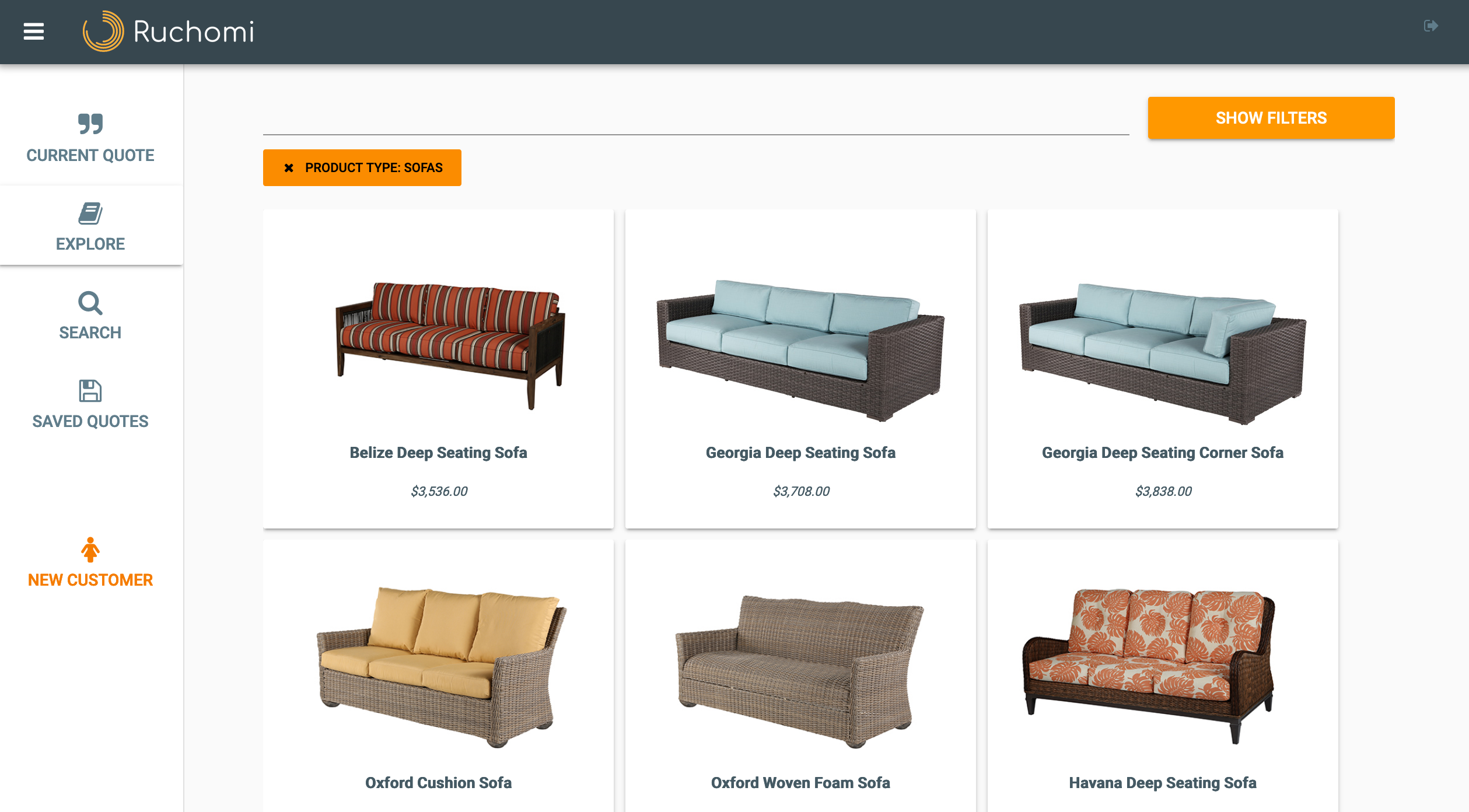Anvil vs Retail Data
Creating a digital product catalogue sounds like a reasonably straightforward task - get product information from your suppliers, store it in a database, and create a simple web application to browse the catalogue. Unfortunately, this is far from the reality. Kevin Dalias has spent years working to improve a system that’s fundamentally broken. He’s using Anvil to build Ruchomi, an app designed simplify the complex process of working with retail product data, making product catalogues as simple as they should be, and accessible to sales staff on the shop floor.
Ruchomi receives catalogue data in all sorts of formats (PDF, malformatted CSV…) from a number of manufacturers. With a little help from Python and machine learning, they wrangle the data into a sensible format, label and categories each product, and then aggregate the data into a digital product catalogue that sales staff can access right on the shop floor.

Ruchomi Product Catalogue
With Anvil, I can actually write the code myself and write the interactions myself. It lets me put industrial expertise into the product itself rather than [paying to develop] some third party product that I have no control over.
I built the MVP app in about two weeks. It would have taken 6 months in any other format.
 By
By